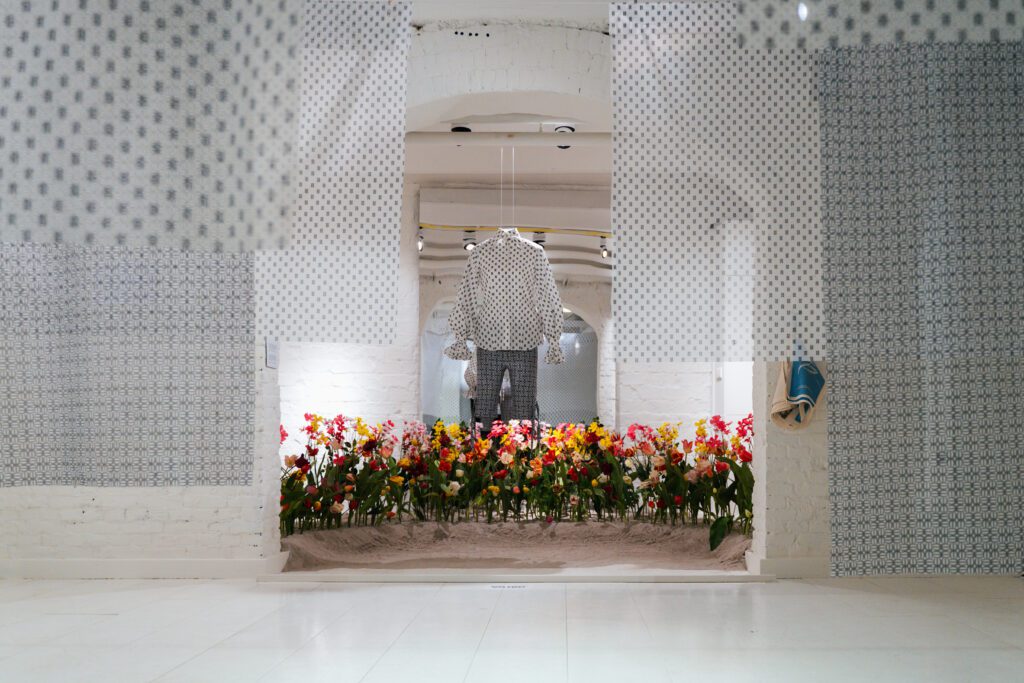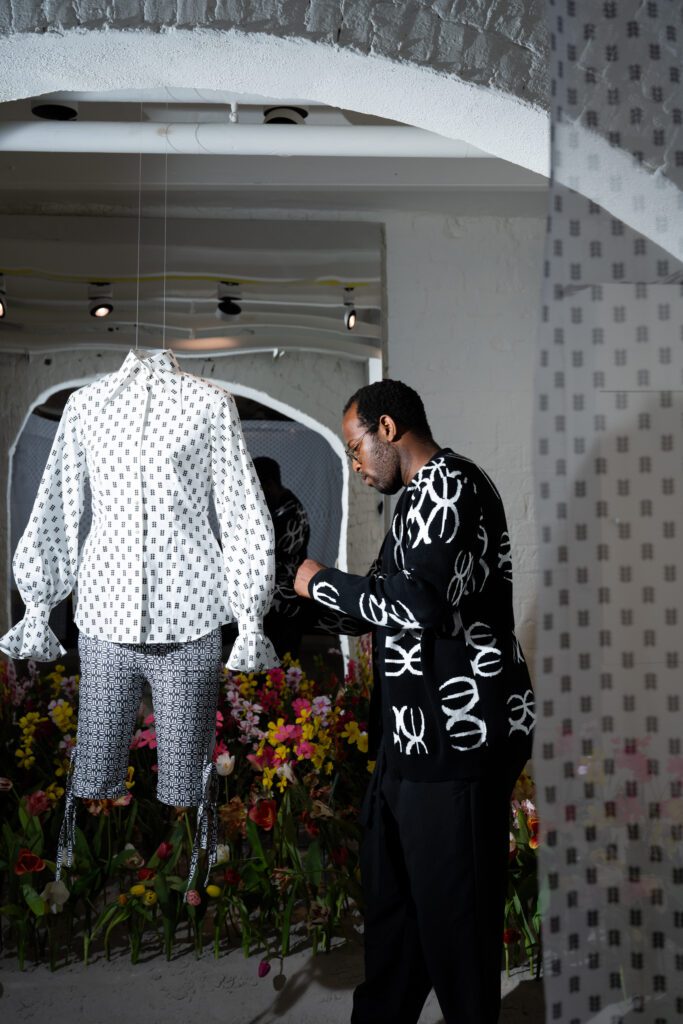Who are you and what do you love most about what you do?
I have a very long name, it’s Angelo Carlo Marcus Elizabeth, and I’m a fashion designer, but I do more than that. I see myself as a chameleon of the arts because I not only design clothing and handbags but also make my own fragrances, perfumes and many other things. Since I was a little child, I was already sketching the plants in the garden. It’s in my DNA because of my family, since we are quite creative. What I love most about what I do is the ability to express my creativity and tell stories through fashion. It is a powerful medium to convey messages, evoke emotions, and create connections with people from different backgrounds. I do a lot of research before I start designing something, and most of the time it includes a personal narrative. I, for example, work a lot with strings in my designs. The shirts have strings on the back because I’ve been through a rough childhood, and I’m putting things back together. The string is a symbol of attaching things back together. I haven’t been back to Curaçao in 13 years, and two years ago, with support, I decided to go back and revisit all these places I had a bad memory of to create new memories.
Which role does sustainability play within your work and practice?
Sustainability, to me, goes beyond environmental considerations. In my practice, sustainability means embracing ethical practices, promoting inclusivity, and valuing the cultural heritage of communities. It involves using responsibly sourced materials, implementing fair labor practices, and celebrating diversity through my designs. I strive to create timeless pieces that transcend trends and contribute to a more conscious and compassionate fashion industry. Before I start working with a new supplier, I always check their certifications, factory code of conduct and (mission) statements. I want to be sure that my products are sustainable in all aspects.
The exhibition at Fashion for Good is called Knowing Cotton Otherwise. Can you tell us more about your contribution to this exhibition and what your process was like?
My contribution is the installation “The Guardian’s Garden: a Textile Tale”. It was really important for me to tell the stories behind cotton. Through this installation, I explore the history of cotton, its complex relationship with slavery, and the resilience of Black women. I came across Virginia Dementricia, and it clicked right away. Her spirit was calling me, and I knew that this was the story I needed to tell with this collection. I incorporated elements from my Caribbean heritage and memories from Curaçao into the artwork, infusing it with symbolism and storytelling. I found an artwork by Vanessa Paulina, who inspired me a lot, and I used that as the silhouette and inspiration for the collection.
The process was a deeply personal and introspective journey. I wanted to highlight that there is a complex story behind cotton. I’ve been to The Black Archives and also been back to Curaçao, and it was very tough, very emotional, and I’ve learned a lot about my heritage. My great grandfather used to have a textile shop, which I didn’t know, and he used to sell suits for men. Now I get why all of my aunts can sew their own clothes. My family doesn’t share a lot until you ask, so I am very grateful that I went back to have these conversations and I’ve learned a lot about myself. For the main piece of the installation, the open-back shirt, I conducted extensive research, delving into historical archives and connecting with the narratives of my ancestors. It involved translating these stories into visual representations, choosing materials with intention, and meticulously crafting each element of the installation. When I was a kid, I used to be outside a lot because of the weather. I always used to sit on this table next to the laundry lines where we hung our clothes to let them dry. I did my homework, I used to sketch, and it was like my own bubble, my place, my safe space, and that’s what I recreated in the museum. It’s like the garden of my grandmother Selma, who was my guardian at the time.
Your grandmother and Virginia Dementricia inspired your work. Why is it important to you to highlight the stories of Black women?
My grandmother and Virginia Dementricia hold powerful stories that have shaped who I am today. I pay tribute to Black women’s strength, resilience, and contributions throughout history. Giving voice to these stories that have often been overlooked or marginalised is essential. Through my work, I aim to challenge prevailing narratives and redefine beauty and power, celebrating the diversity and richness of Black experiences. By sharing these stories, I hope to inspire others, spark dialogue, and create a more inclusive and equitable world. People like Virginia Dementricia are becoming icons for people, especially women who are protesting because she had this rebellious spirit and fought for her beliefs. When I was living in Curaçao, I felt different, and I had to leave and move to the Netherlands in order to be myself and to find freedom, and she inspired me.
What do you hope people take away after seeing your work in the museum?
I hope the story will touch them and that my work resonates with visitors on multiple levels. I want them to experience an emotional connection, feel inspired and reflect on the stories and histories embedded in the textiles. I hope they gain a deeper understanding of the collective strength of marginalised communities and the importance of acknowledging and celebrating their contributions. Ultimately, I hope my work sparks conversations, raises awareness, and encourages a more inclusive and empathetic society.
Why is a community-driven mindset that strives for collectivity important to you?
I grew up with my grandmother, who had 13 children. I really feel at home with a lot of people around me. That’s why I want to create this community, especially for people who are not seen or not heard, like myself. Being a black Caribbean person (from Curaçao), I had no example in the fashion industry while growing up. Hopefully, people will come together, read the story and try to be more open and more understanding towards each other because everybody has a story, and I think we should share that more. A community-driven mindset and the pursuit of collectivity are integral to my work and values. I believe that collaboration and inclusivity foster innovation and create a stronger, more supportive environment. By working collectively, we can challenge existing norms, bridge divides, and amplify marginalised voices. It is through collective efforts that we can create positive change and a more equitable and sustainable fashion industry.





